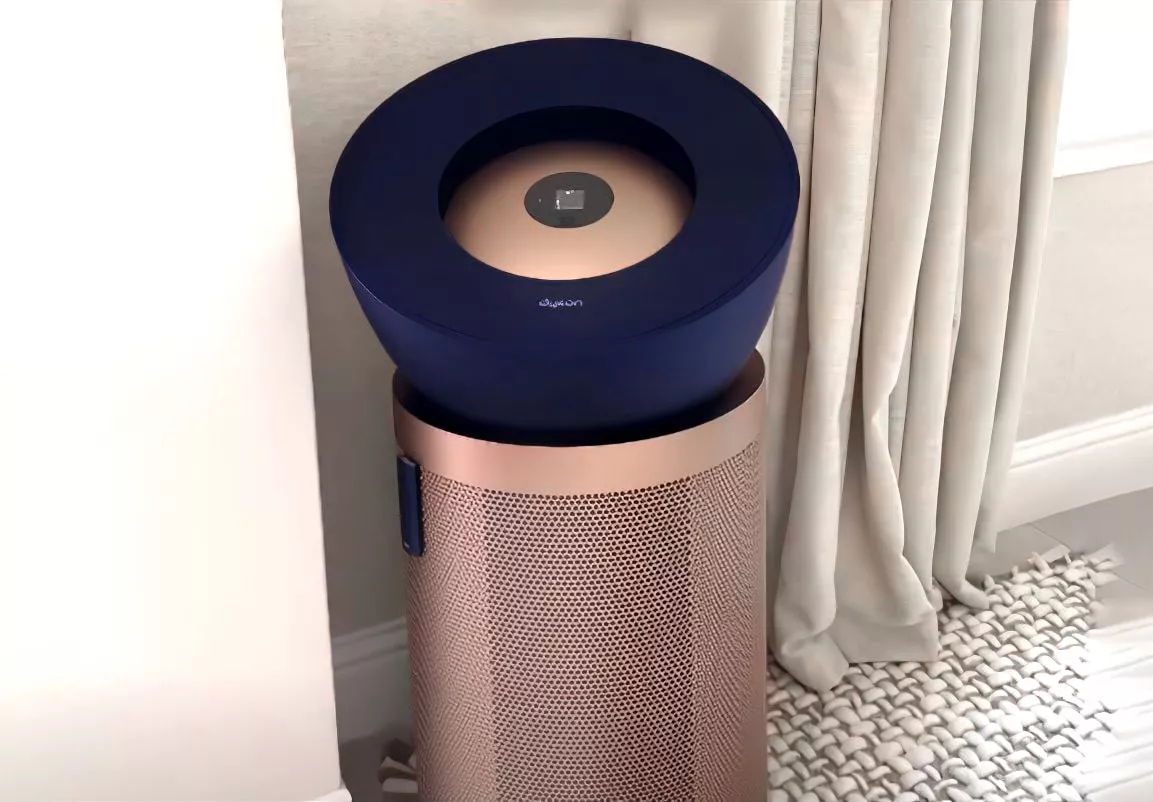Dyson recently launched the Big+Quiet air purifier. I found out yesterday, after writing about whether Dyson air purifiers are worth the money.
Normally, as an HVAC blogger and electrical engineer, I get to know all new products on the market quickly. But the Big+Quiet entered the stage, as its name suggests, quietly.
I guess the biggest reason is the price. At $1,000, the Dyson Big+Quiet is a luxury product.
When you google the “Dyson Big+Quiet”, all you get is a wall of sales copy-type blog posts with no investigation beyond surface-level data and no questioning of marketing statements at all.
Affiliate commissions for websites recommending products are around 4%. Accordingly, every Dyson Big+Quiet referral nets $40 (!) of profit.
So, everybody is just trying to sell you this thing.
I am sick of it. Here’s a real review:
In this post, we’re going to check the Dyson Big+Quiet from all angles.
- What’s unique about the Dyson Big+Quiet?
- How does it compare to competing air purifier brands?
- How does it compare to other Dyson air purifiers?
- And, most importantly, is it worth its money?
So, let’s have a look!
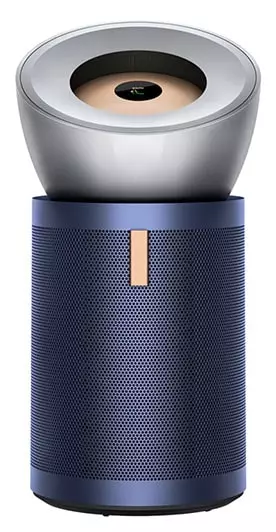
What’s unique about the Dyson Big+Quiet?
Sensor-suite with real-time air pollution reports
A set of sensors inside the Dyson Big+Quiet monitors pollution levels in real time and crunches the data into an air quality report which you can view on the LCD screen or in the MyDyson™ app.
Dyson emphasizes the algorithm that calculates the air quality index is unique. To me as an engineer, this sounds funny, because as soon as you work with a set of specific sensor models (which nobody else uses), you have to use a unique algorithm - by definition.
What I like: The formaldehyde sensor is solid-state, meaning it lasts forever.
That’s great!
Detects and Destroys Formaldehyde
Another feature that works for a lifetime is the catalytic filter the Dyson Big+Quiet uses to break down formaldehyde molecules.
The catalytic filter continuously traps and breaks down formaldehyde molecules into water and CO₂ and never needs replacing.
This is particularly useful for those concerned with volatile organic compounds (VOCs) in their living spaces.
But how is that possible? Why does that filter not need replacement?
The key word here is “catalytic”. Catalysts are materials that can increase the likelihood of a chemical reaction through their mere presence. In a chemist’s terms, they lower the activation energy of a reaction.
The catalyst, however, does not participate in the reaction. So, it doesn’t wear down and lasts forever.
I like that.
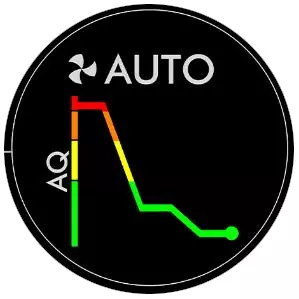 Big+Quiet LCD screen: The air quality index indicates air quality over time. In the image, you can see the air quality improving over time!
Big+Quiet LCD screen: The air quality index indicates air quality over time. In the image, you can see the air quality improving over time!
Dyson Cone Shape: Adjustable Airflow Angles
One of the most peculiar features of the Dyson Big+Quiet is the cone-shaped head sitting on the air purifier’s body.
Largely, that is a design thing.
Technically, Dyson made use of it, however, by integrating adjustable airflow angles.
You get the option to adjust the angle of airflow at 0°, 25°, or 50°, and there’s also a Breeze mode to mimic natural air circulation.
While this is indeed a unique feature of the Dyson Big+Quiet, it is unique for a reason:
The airflow angle does not matter at all for air purification.
It might help improve airflow across a room. But largely, it is a totally unnecessary feature.
Dyson advertises that this allows you to run the Big+Quiet standing in a corner.
This is only partially true: What really matters for air purification is passing air through the filters.
So, it doesn’t matter at which angle the air leaves the cone top, it matters how much air passes through your air purifier filter in a given time.
The adjustable airflow angles don’t help with this at all.
Now, a Dyson salesman would argue that the angled airflow helps pick up particles from distant corners.
But the truth is:
In a lively room where you walk around occasionally and which you vent occasionally, there is already enough natural airflow.
There’s no need for adjustable airflow angles.
Where the Dyson Big+Quiet Falls Short
Useless feature: Dyson Big+Quiet Cone Aerodynamics
In a previous section, we already discussed the adjustable airflow angles and the cone on top from an air purification standpoint.
But, it gets even worse.
Dyson markets their Big+Quiet air purifier somehow like a fan:
The device is designed for large spaces and uses “cone aerodynamics” to provide long-range projection and circulation of purified air throughout the room.
The term “cone aerodynamics” is obviously just marketing.
And again:
For an air purifier, it does not matter how the air comes out of it. What really matters is how well air can pass through the filter.
After all, you want an air purifier and not a fan.
So, I don’t get why Dyson advertises “cone aerodynamics”. Surely, it’s just to add more content to the sales page and justify the $1,000 price tag.
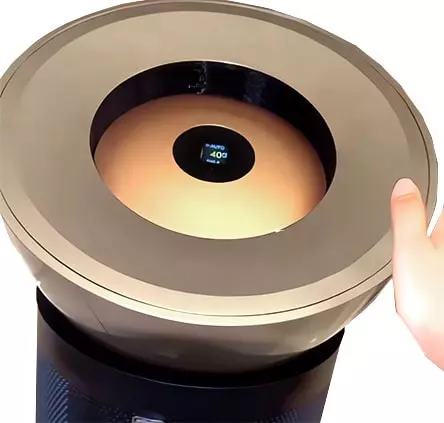
Loudness: The Dyson Big+Quiet is not quiet
Dyson says the Big+Quiet air purifier offers quiet operation even at full power, recording just 56dBA of sound power, making it suitable for noise-sensitive environments like bedrooms or studies.
Sounds good, right?
Well…
It sounds good until you compare it with the competition. The Levoit Core 300 (my favorite air purifier), for example, runs at just 24dB at the lowest setting up to 50dB at the highest.
Now you might argue that the difference is only 6dB. However, measured in dB, a 3dB increase is a doubling of sound power.
This means, with the 6dB difference, the Dyson Big+Quiet is four times as loud as a regular air purifier (given we look at sound power only).
To be fair, the human ear does not perceive 6dB as four times as loud. We perceive loudness non-linearly as well. A rule of thumb is that 10dB doubles perceived loudness. So, realistically, you will perceive the Dyson Big+Quiet as about 60% louder than a regular air purifier.
Heck, I even reviewed quieter air conditioners (which are 47dB to 52dB at their lowest settings) .
A good overall noise estimate is the following:
A Dyson Big+Quiet at the highest setting is as loud as an air conditioner on the lowest setting.
HEPA 13 Filter: The standard filter every other air purifier has
The Big+Quiet comes with a three-phase purification system that captures 99.97% of fine particles as small as 0.1 microns.
Sounds good, right?
Until you find out that HEPA 13 is the de-facto standard filter that even low-end air purifiers have.
For $1,000 I’d seriously expect something even better.
Admittedly, Dyson supplies the standard HEPA 13 filter with the formaldehyde-destroying catalyst we discussed earlier, which is a good thing.
But advertising the HEPA 13 filter specifically is a bummer, Dyson.
It would be more of a spectacle if your filter did not fulfill the HEPA 13 standard.
And here is one of the key learnings from this article:
A Dyson Big+Quiet doesn’t purify air more thoroughly than any other air purifier, since they use the same filters.
( Ignoring the formaldehyde-decomposing catalyst for a moment )
How does it compare to other air purifier brands?
Overall, the only really unique feature I noticed in the Dyson Big+Quiet is the formaldehyde-destroying catalyst filter.
And you only really need that filter if you are overly exposed to formaldehyde… which only few people are.
So, there is not much special to say about the Dyson Big+Quiet.
Quite frankly, the Dyson Big+Quiet offers the same features as other air purifiers, but at a much higher price.
Let’s have a look at this Coway Airmega 400 air purifier(click here to view it on amazon). At half the cost of a Dyson Big+Quiet, which is still quite high for an air purifier, this Coway air purifier is probably Dyson’s most worthy competitor.

Just like the Dyson, the Coway air purifier has everything you’d ever wish for in an air purifier:
- Combined HEPA and activated carbon filter
- Automatic operation
- Air quality monitoring
You can get all these features even cheaper with this Levoit Core 300S air purifier (click here to view it on amazon).
It also comes with the same filter, auto mode, and air quality monitoring (although only for particles larger than 2.5 microns - here, both Coway and Dyson are better).
Since it’s a smaller air purifier, it can’t cover the same room size as the larger Coway Airmega or the Dyson Big+Quiet.
Overall, the Dyson Big+Quiet is technically superior to regular-sized air purifiers. But within the premium segment, they prove overly expensive when compared to equally performing air purifiers from Coway.
How does the Dyson Big+Quiet compare to other Dyson air purifiers? (Pure Cool, Hot+Cool)
Dyson has a variety of models, including the Pure Cool and the Hot+Cool series. How does the Big+Quiet stack up against these?
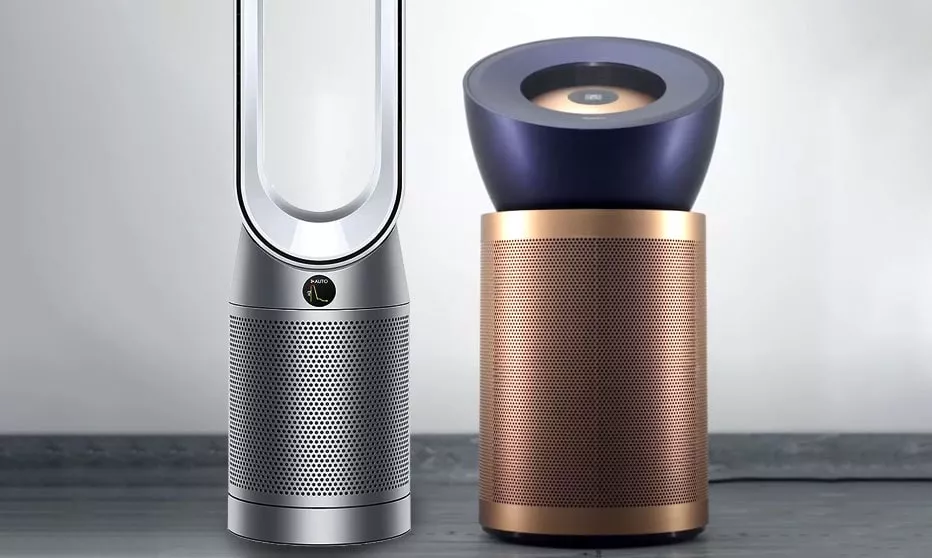 How does the Dyson Big+Quiet compare to the Hot+Cool and Pure Cool air purifier fans?
How does the Dyson Big+Quiet compare to the Hot+Cool and Pure Cool air purifier fans?
Big+Quiet covers more area
Firstly, the Big+Quiet is designed for larger spaces. The Pure Cool and Hot+Cool are aimed more at medium-sized rooms. So, if you’re looking to cover more square footage, the Big+Quiet offers that advantage.
Big+Quiet can filter formaldehyde
The Big+Quiet’s key standout feature is its formaldehyde-destroying catalytic filter. Neither the Pure Cool nor the Hot+Cool have this specialized formaldehyde filter. If you are concerned about this particular VOC, then the Big+Quiet is the obvious choice.
Only the Hot+Cool series can heat
One edge the Hot+Cool has over the Big+Quiet is its heating capability, which is absent in both the Big+Quiet and the Pure Cool. If you’re looking for an all-in-one climate control solution, the Hot+Cool may be more to your taste.
The Big+Quiet is more pricey
When it comes to price, both the Pure Cool and Hot+Cool come at a cheaper price point than the Big+Quiet. The question then becomes, are the Big+Quiet’s additional features worth the extra money?
Is the Dyson Big+Quiet worth it?
Now, the million-dollar—or rather, thousand-dollar—question. Is the Dyson Big+Quiet worth its steep price?
If you’re someone who is specifically worried about formaldehyde in your living space, the Big+Quiet offers unique value. The solid-state sensor and the catalytic filter that never needs replacing can justify the higher cost over time.
However, if you don’t have these specific needs, I would argue that it’s difficult to justify the expense. The Big+Quiet doesn’t clean the air any more effectively than other air purifiers with HEPA 13 filters.
And when you consider the lack of necessity for the cone aerodynamics and adjustable airflow angles, along with its sub-par noise level, it’s hard to recommend the Big+Quiet to the general user - especially when competing brands offer similar specs for much less money.
That said, if money is no object, you’re concerned about formaldehyde, and you’re taken with Dyson’s design aesthetics, you may find the Big+Quiet to be a suitable investment.
But if you’re a budget-conscious consumer looking for value for money, you may be better served by exploring alternatives from other reputable brands like Coway or even other models within Dyson’s own range.
So, to sum up: the Dyson Big+Quiet is technically impressive, but you’ll need to weigh its unique features against its high cost to decide if it’s the right fit for you.
